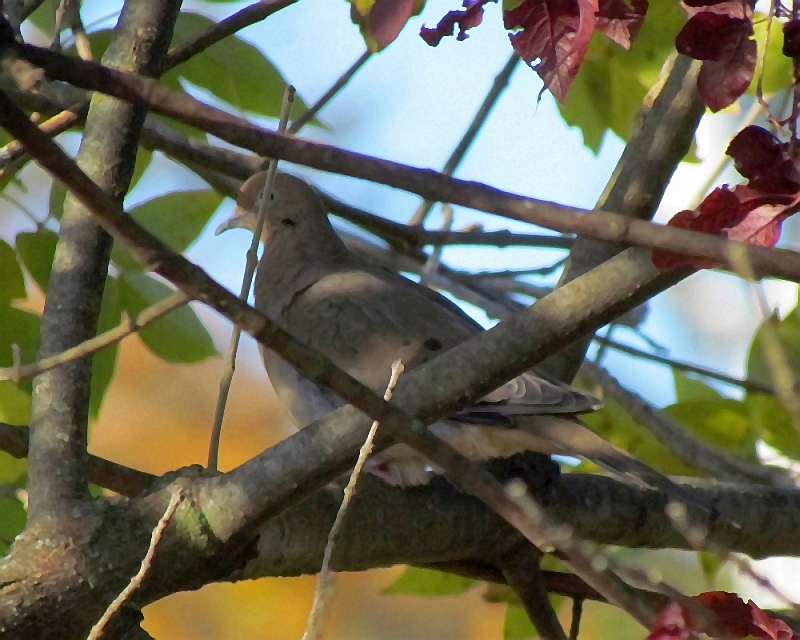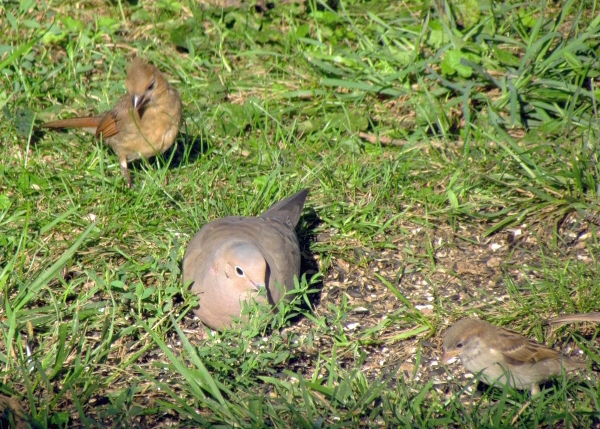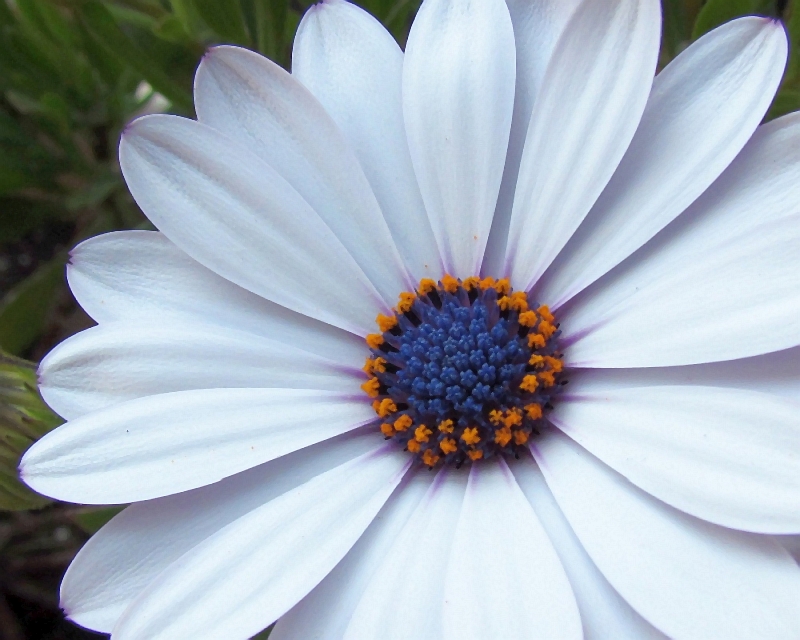
Featured Photo for Sale
BP07 "A mourning dove in a tree"
© Richard L. Bowman

The most docile and large regular visitors to the area below our bird feeders are Mourning Doves. I also find them often perched on the electrical wire that crosses our backyard. However, with my bad eyesight, I rarely find them roosting in the trees in our backyard. But this photo shows that I did at least once in the past four years. The Audubon Guide to North American Birds says, "[The mourning dove] does very well in man-altered habitats. Numbers probably have increased greatly with increasing settlement of North America."
And while this species seems to do well with other birds around (see photo below), I have seen them getting testy with other birds who might be trying to actively chase them.

Mourning Dove Centered between a Female Cardinal and a Female House Sparrow (1-Aug-17; © Richard L. Bowman)
So what do we imagine about the above photo? Does this Mourning Dove think that the branches that are cris-crossing in front hide their position from me? As a retired physics professor, I am wondering if the small branch right in front of the eye causes distortion so that the bird cannot see me and thus might think I cannot see it. Just a thought.
For more information on Mourning Doves, see the following:
Audubon
Guide to North American Birds
All about Birds: Mourning Dove (Cornell U.)
Wikipedia:
Mourning Dove
To view more photos for purchase, select an active page below.
Page 1 Page 2 (more to come) How to Frame Photos
Whenever you are finished shopping, view your cart to complete your purchases.
Note: Final prints might be cropped slightly differently than what is shown here depending upon the chosen size.
Previous Featured Photo for Sale
BP02 "African Daisy close up"
© Richard L. Bowman

My first sighting of an African daisy was on the concrete deck outside of the Lezha Academic Center, Lezhë , Albania. The above photo was taken in March 2014. The unique combination of white petals with a bright blue center ringed in orange is awesome to me.
As mentioned by several sources, these blooms are composite flowers with the outer ring being ray florets with one petal on the outside. The center is composed of unopened disk florets surrounded by a ring of opened disk florets. One site with straightforward details about the parts of a Zinnia flower head is a blog for children by Roberta Gibson (2015). While they originated in South Africa and the Arabian peninsula as perennials, these flowers are now available as annual seeds of many colors in the US and other places (e.g. Park Seed).
To view more photos for purchase, select an active page below.
Page 1 Page 2 (more to come) How to Frame Photos
Whenever you are finished shopping, view your cart to complete your purchases.
Note: Final prints might be cropped slightly differently than what is shown here depending upon the chosen size.
©2013-20 by Richard L. Bowman